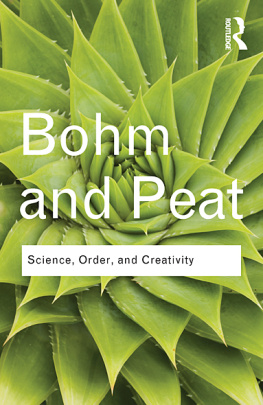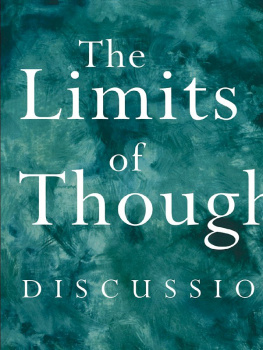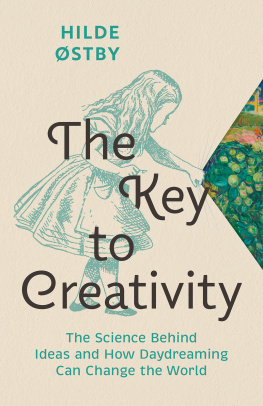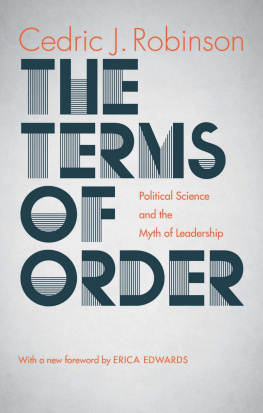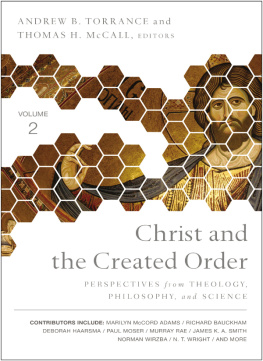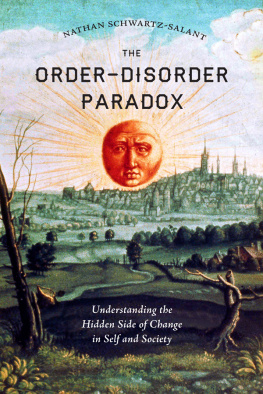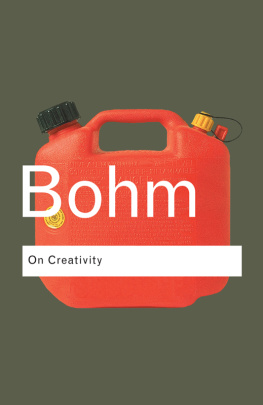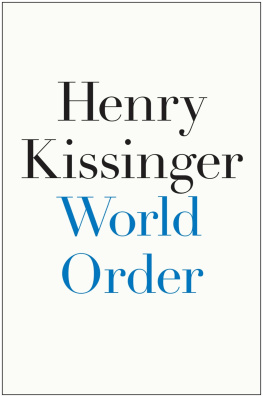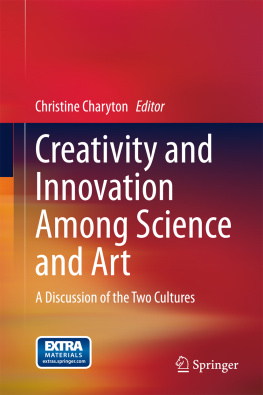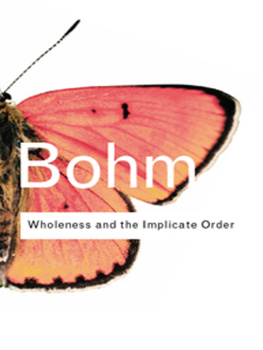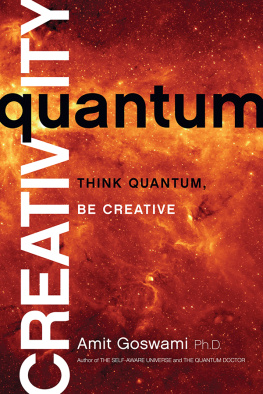Science, Order, and Creativity
An outstanding probe of the creative process in science.
Marilyn Ferguson, author of The Aquarian Conspiracy
A rare combination of depth and breadth, this probing book stirs both the mind and the heart, and attracts and inspires on many levels: philosophical, scientific, existential and spiritual.
Rene Weber, author of Dialogues with Scientists and Sages: The Search for Unity
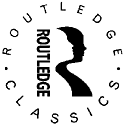
Routledge Classics contains the very best of Routledge publishing over the past century or so, books that have, by popular consent, become established as classics in their field. drawing on a fantastic heritage of innovative writing published by Routledge and its associated imprints, this series makes available in attractive, affordable form some of the most important works of modern times.
For a complete list of titles visit
www.routledge.com/classics
Science, Order, and Creativity
David Bohm
and
F. David Peat

London and New York
First published in the USA in 1987
by Bantam Books
First published in Great Britain in 1989 by Routledge
First published in the Routledge Classics 2011
by Routledge
2 Park Square, Milton Park, Abingdon, Oxon OX14 4RN
Simultaneously published in the USA and Canada
by Routledge
270 Madison Avenue, New York, NY 10016
Routledge is an imprint of the Taylor & Francis Group, an informa business
This edition published in the Taylor & Francis e-Library, 2010.
To purchase your own copy of this or any of Taylor & Francis or Routledges collection of thousands of eBooks please go to www.eBookstore.tandf.co.uk.
1987 David Bohm and F. David Peat
Preface and chapter 7 2000 F. David Peat
The right of David Bohm and F. David Peat to be identified as authors of this work
has been asserted by them in accordance with sections 77 and 78 of the Copyright,
Designs and Patents Act 1988.
All rights reserved. No part of this book may be reprinted
or reproduced or utilised in any form or by any electronic,
mechanical, or other means, now known or hereafter
invented, including photocopying and recording, or in
any information storage or retrieval system, without
permission in writing from the publishers.
British Library Cataloguing in Publication Data
A catalogue record for this book is available from the British Library
Library of Congress Cataloging in Publication Data
A catalog record for this book has been requested
ISBN 0-203-84481-5 Master e-book ISBN
ISBN 10: 041558485X (pbk)
ISBN 10: 0203844815 (ebk)
ISBN 13: 9780415584852 (pbk)
ISBN 13: 9780203844816 (ebk)
CONTENTS
PREFACE
F. David Peat
Following the completion of this book (first published in 1987) David Bohm and I met at The Baily Farms Institute near Ossining, New York. Originally a hobby farm, the area consists of two houses, a small lake and wooded and grassed areas where Dave and I could sit and talk. Because we were the only guests over that period we had plenty of time to ourselves. It was October, warm and sunny at midday, but cool enough for a good walk in the morning and late afternoon. This was important for it was while walking and talking that David Bohm often did the major work of his day.
Having finished the first edition of this book we were left with a more leisurely period and our walks were filled with discussions on consciousness, and new ideas about a pre-space structure and its relationship to general relativity. Bohm also talked about Hegel and emphasized the way his philosophy concerned the mechanisms of thought. Bohms long-term companion, Basil Hiley, once remarked that Bohms thinking was like a spiralfor a time he would focus on one area and then appear to leave it for some quite different interest, only to return, months or even years later, with a much deeper sense of the original topic. His new focus on Hegel seemed yet another aspect of this process. And so we talked about the dialectic and binary oppositions in thought, and about the way people tend to adopt fixed non-negotiable positions.
This was also a time when Bohm took a somewhat pessimistic position regarding the future of the human race. He wondered if there was any way out of our present predicaments or if we were doomed to succumb to the implications of our fixed positions. During these discussions we did not always agreeindeed, if we had been in complete accord then there would not have been much point in writing a book together. I do not share Bohms pessimism for the future of humanity and I had some reservations about his enthusiasm for the dialogue process that, he believed, could show us a way out of our general predicament.
At all events, sufficient creative tension was generated for us to want to work together again. But what would we write about? The number of topics we had covered was too vast. How to pin them down? How could we group them around a single framework? For several days our discussions revolved around this point. Then one morning, while walking down the driveway from the house to the main gate, the plan of the book appeared to us both in its entirety. By the time we reached the gate we knew what we would be writing about. We turned back to retrace our steps and confirm what we had decided. That afternoon I typed up the notes of our discussion. I have them now before metwenty-four single-spaced pages beginning Why are we writing this book? This material provides the inspiration for a new and final chapter.
INTRODUCTION
This book grew out of a series of dialogues that took place between us over the last fifteen years. It therefore seems appropriate, in this Introduction, that the reader should be given some idea of the genesis of our book and of the kinds of thoughts and questions that stirred us into writing it. Since this naturally involves our own personal backgrounds, feelings, and attitudes, it is most easily presented in the form of a dialogue between us. Indeed, what follows could well have taken place during one of our afternoon walks together while the book was being written.
DAVID BOHM: I think that it would be a good idea to begin with the book itself. What first led you to suggest that we should write a book together?
DAVID PEAT: Well, a question like that takes me right back to my childhood. You see, as far back as I can remember, I was always interested in the universe. I can still remember standing under a street lamp one eveningI must have been eight or nineand looking up into the sky and wondering if the light went on forever and ever, and what it meant for something to go on forever and ever, and if the universe ever came to an end. You know the sorts of questions. Well, pretty soon the idea began to excite me that the human mind was able to ask these sorts of questions and in some way comprehend the vastness of everything.
These sorts of ideas continued right through school, along with a feeling of the interconnectedness of everything. It was almost as if the entire universe were a living entity. But of course, when I got down to the serious business of studying science at university, all this changed. I felt that the deepest questions, particularly about the quantum theory, were never properly answered. It seemed pretty clear that most scientists were not really interested in these sorts of questions. They felt that they were not really related to their day-to-day research. Instead, we were all encouraged to focus on getting concrete results that could be used in published papers and to work on problems that were scientifically acceptable. So fairly early on, I found myself getting into hot water because I was always more excited by questions that I didnt know how to answer than by more routine research. And of course, thats not the way to build up an impressive list of scientific publications.

